25 Classic Horror Films Every Serious Film Fan Should See
- Oops!Something went wrong.Please try again later.
- Oops!Something went wrong.Please try again later.
The horror genre can feel overwhelming for some — it’s full of classics, sure, but also schlock-fests, perfectly average genre exercises and, frankly, more than a few extremely bad knock-offs. But if you’re looking to catch up the essential horror bona fides, we’ve got you covered. Below, we’ve put together a list of 25 horror classics that every serious film fan should see, providing a wide range of influential films from 1920 all the way up to 2017.
This is by no means a complete list — there are so many more great horror films to check out. But if you want an entry point to the best of the best, start here.
“The Cabinet of Dr. Caligari” (1920)
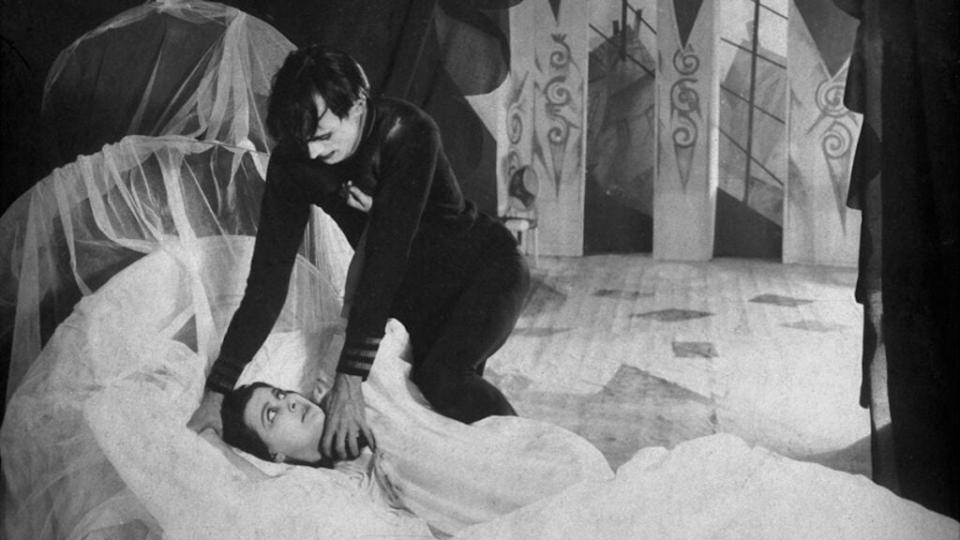
Robert Weine’s “The Cabinet of Dr. Caligari” has been touted as the first true horror film that helped to shape the horror and film noir genre through its dark visual style. The German silent film tells the story of several murders ordered by a hypnotist who uses a somnambulist to commit his violent crimes. The movie relies heavily on German expressionism in its twisted style, featuring unusual angles and contrasts with shadows and streaks of light. Written by Hans Janowitz and Carl Mayer on the heels of World War I, the classic film draws inspiration from the distrust of authority felt by the writers, who were both pacifists. Watch for yourself and see how the twist ending makes you feel. – Loree Seitz
“Nosferatu” (1922)
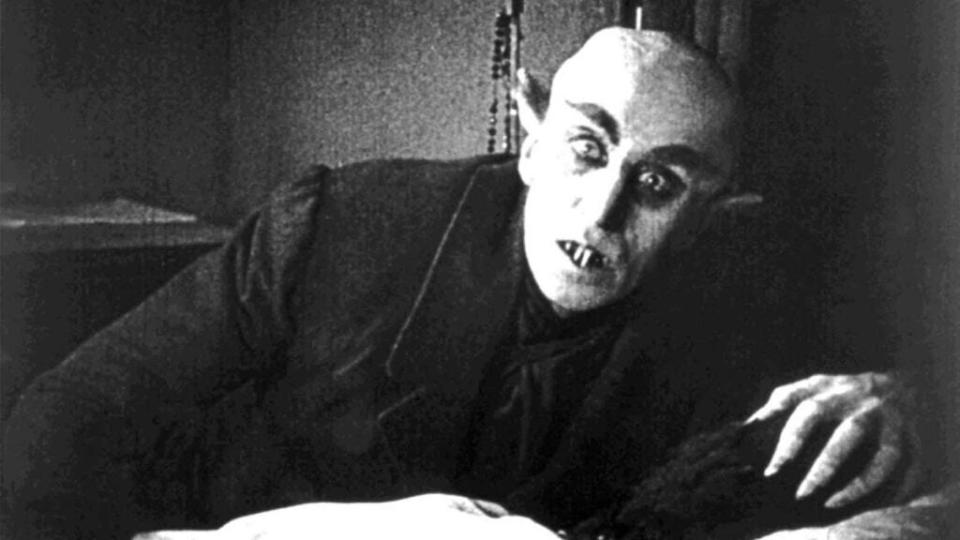
“Nosferatu,” also known as the first vampire movie ever, joins “The Cabinet of Dr. Caligari,” as another influential silent German expressionist film and lays the ground work for the likes of more “Dracula” adaptations, “Twilight” and pretty much every vampire movie ever made. Directed by F. W. Murnau, the adaptation of Bram Stoker’s 1897 novel “Dracula” tells the classic tale of a vampire whose bloodsucking habits get him into trouble. Thomas Hunter is sent to Transylvania by his boss to meet a client named Count Orlok, who has plans to buy property close to Hutter’s home, but he becomes concerned with his potential new neighbor when his wife’s life becomes threatened and Orlok checks off all the suspicious boxes of being a vampire. – Loree Seitz
“The Invisible Man” (1933)
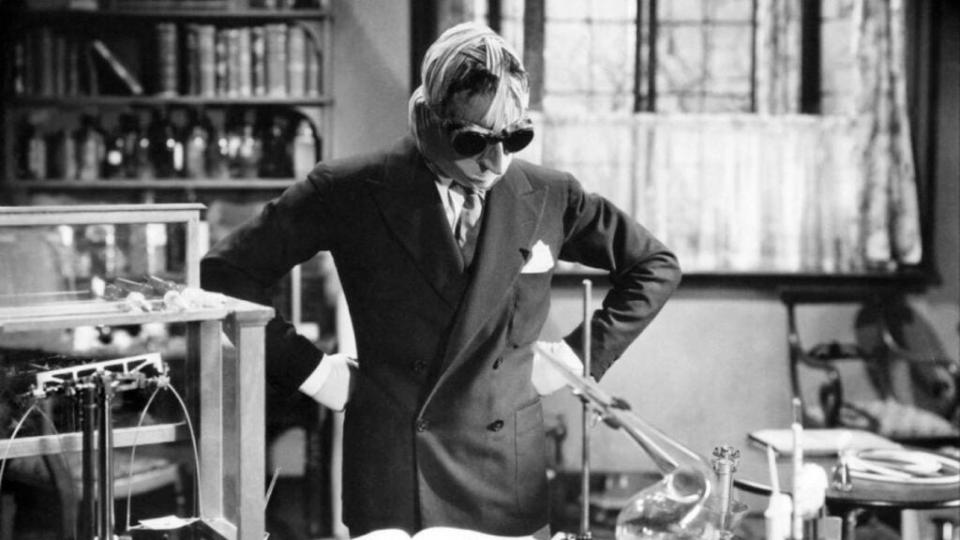
With dozens of films and more than a dozen bonafide classics among them, Universal’s monster movies offer no shortage of essential films for horror lovers to watch. But if you’re wondering where to begin with Universal’s monsters, you can’t go wrong with James Whale, and if you’re wondering where to start with James Whale, you can’t go wrong with “The Invisible Man.” While it may not be the best-known or most-celebrated entry in the “Frankenstein” and “The Old Dark House” director’s filmography, the 1933 film adaptation of H.G. Wells’ tale of madness and monstrosity is slick and scary, to this day. Starring Claude Raines as a scientist who turns himself invisible – and into a murderous madman – “The Invisible Man” holds up tremendously well, and as a bonus, the subsequent sequels are a fascinating look at early Hollywood franchising. – Haleigh Foutch
“Psycho” (1960)
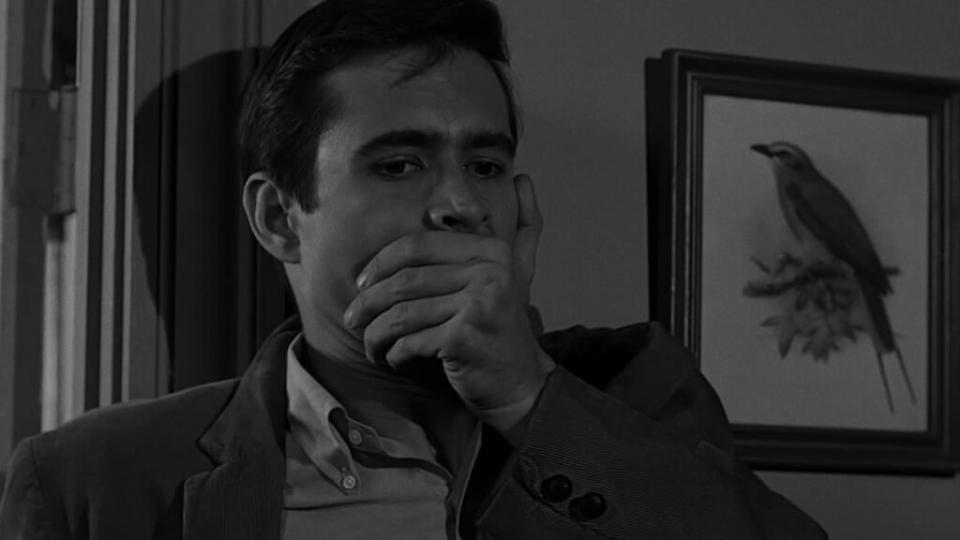
Alfred Hitchcock’s “Psycho” revolutionized the genre with its masterful editing and a compelling antihero by the name of Norman Bates (Anthony Perkins). Hitchock wasn’t nicknamed the Master of Suspense for nothing — the infamous shower sequence is one of many that have earned their place in film history. The story begins through the eyes of an entirely different character, a woman named Marion Crane (Janet Leigh) who stops at at the sketchy Bates Motel while on the run from the law. Resist the urge to look up the ending — once you see the final shot, you’ll never forget it. – Harper Lambert
“The Birds” (1963)
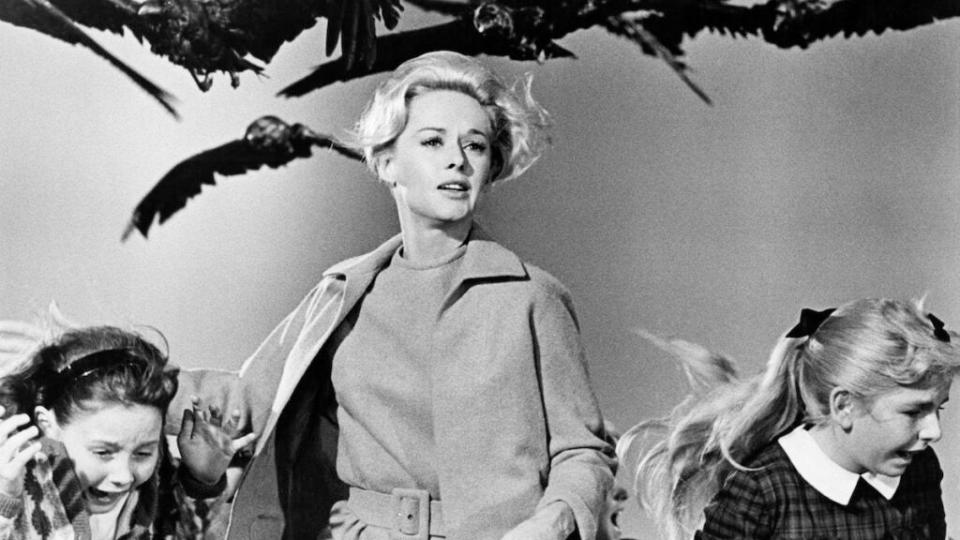
Alfred Hitchcock’s “The Birds” is yet another horror staple that elevated the genre by taking advantage of the industry’s technological advancements. Nominated for Best Special Effects at the 36th Academy Awards, the film places its focus on a series of unexplained bird attacks on a community in Bodega Bay, CA. Based on a short story by Daphne du Maurier, socialite Melanie attempts to clear the air with the subject of a prank, Mitch, by delivering a gift to his family in Bodega Bay. Their attraction to one another inclines her to stay, but the town soon becomes an arena for violent and frequent attacks by birds of all types. Although effects have grown substantially since the 1960s, “The Birds” left many scared to even utter the words “Bodega Bay.” – Loree Seitz
“Rosemary’s Baby” (1968)
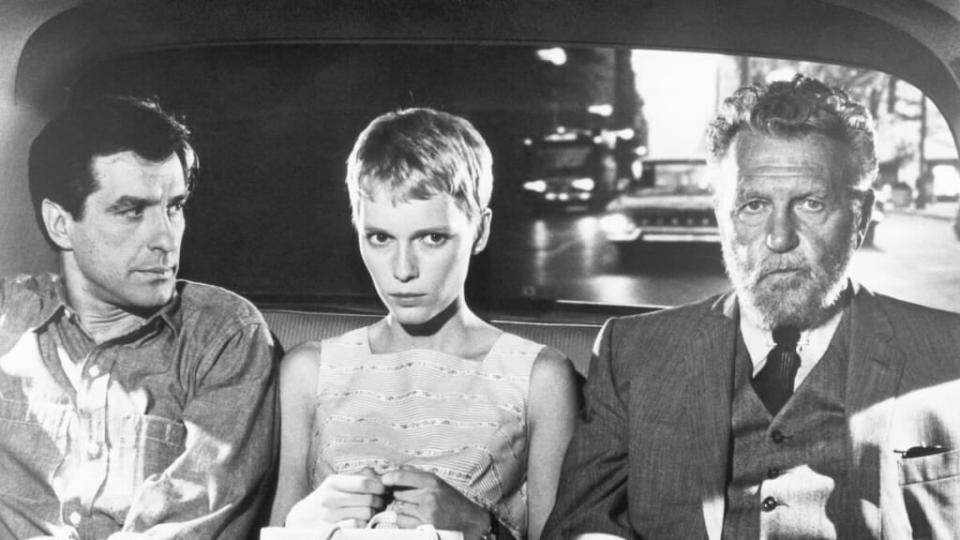
Roman Polanski’s “Rosemary’s Baby” elevated the horror genre with its psychological twist and feminist focus. Starring Mia Farrow, John Cassavetes and Ruth Gordon, the film centers on Rosemary, a young woman married to Guy, an actor, as the pair move into a new apartment building rumored to be haunted, and their introduction to their elderly neighbors who are plagued by death and tragedy doesn’t help. Things escalate when Rosemary becomes pregnant and a strange hallucination of Satan haunts her. Tortured with pain from the pregnancy, even Rosemary herself becomes terrified to wonder what this baby will do if it’s born. – Loree Seitz
“Night of the Living Dead” (1968)

George A. Romero, aka the Godfather of Zombies, made his directorial debut with the 1968 classic “Night of the Living Dead;” an absolute must-watch for horror, zombie movie and independent cinema enthusiasts alike. Shot on a micro-budget by ambitious first-time filmmakers, “Night of the Living Dead” ultimately became a box office sensation – one of the most profitable movies of its era. It also originated the template for the zombie genre as we still know it today, launching the career of a horror legend, a decades-long franchise and an enduring narrative archetype through its horrifying tale of strangers that take shelter from the flesh-eating undead in an isolated farm, only to turn on each other in monstrous acts of terror, greed and self-preservation. – Haleigh Foutch
“The Exorcist” (1973)
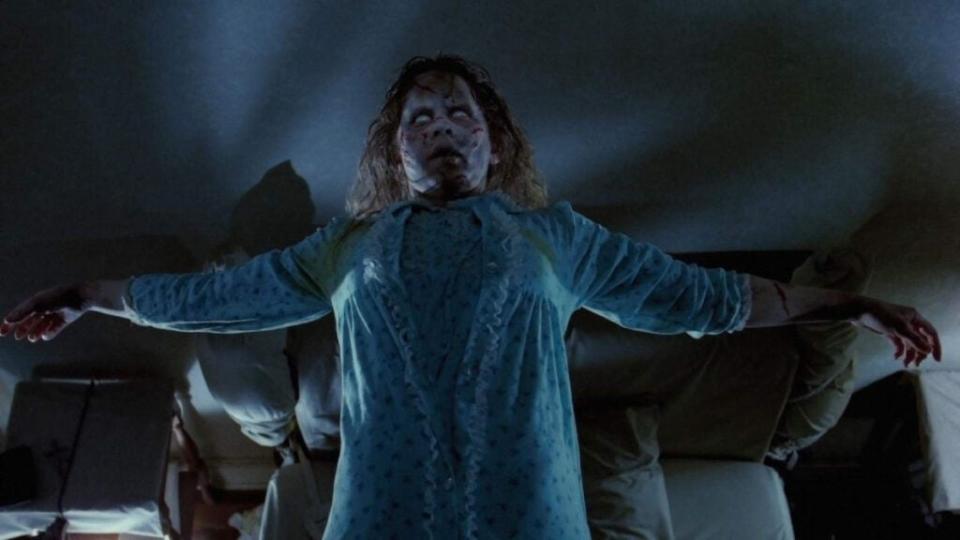
“The Exorcist” is a pioneering fusion of two genre staples: demonic possessions and haunted children. William Friedkin’s 1973 classic revolves around a young girl named Regan MacNeil (Linda Blair) who starts exhibiting a pattern of disturbing behaviors. Her desperate mother Chris (Ellen Burstyn) turns to the church in an attempt to exorcise the devil that lives inside her daughter. Not only did “The Exorcist” have a strong cultural impact, sparking fervent debates about censorship, it inspired generations of horror filmmakers to come. – Harper Lambert
“Texas Chainsaw Massacre” (1974)
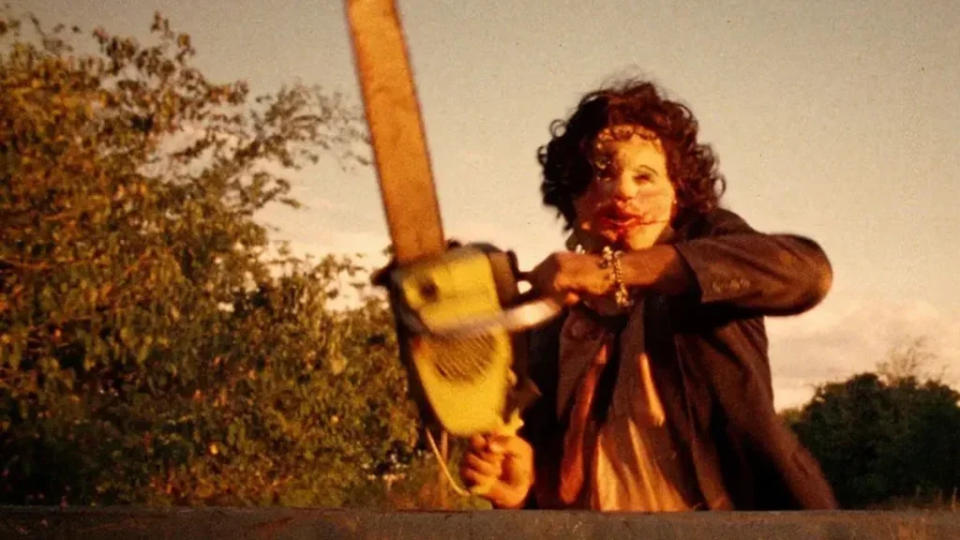
If “Texas Chainsaw Massacre” conjures up images of blood-and-guts execution, you may be surprised to learn that the film contains relatively little graphic violence. All of “Texas Chainsaw”s horrifying magic lives within suspenseful situations and the all-consuming fear on the actors’ faces. Director Tobe Hooper’s film kicks off when Sally (Marilyn Burns) and some friends visit her grandfather’s grave and end up encountering a family of serial killers. One by one, Leatherface (Gunnar Hansen) and his kin go after the group, kidnapping an unlucky few inside their blood-drenched warehouse. One of the quintessential slashers of the ‘70s, “Texas Chainsaw” spawned an entire franchise, including a 2022 remake and protégé horror movie “X.” – Harper Lambert
“Jaws” (1975)
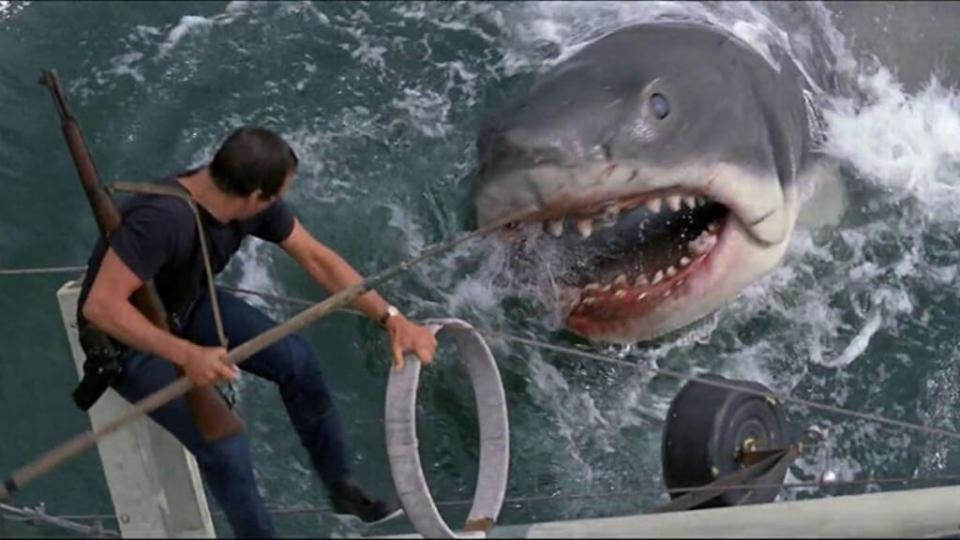
A film that literally has the power to make you fearful of going anywhere near a beach again, “Jaws” is a classic in a number of respects. Steven Spielberg’s 1975 film was a famously difficult shoot, but the lack of a working shark to show off onscreen forced the director to get creative, and an entire approach to horror was born. What’s scary about “Jaws” is what you don’t see – a fin here, a buoy there, all portending dangerous evil just under the water’s surface, letting your mind fill in the blanks for the terror below. “Jaws” is one of the most influential films of all time: it created the “summer blockbuster,” it jump-started the career of one of cinema’s greatest director and it’s still influencing movies that are made today. Oh, and it’s scary as heck. – Adam Chitwood
“Carrie” (1976)
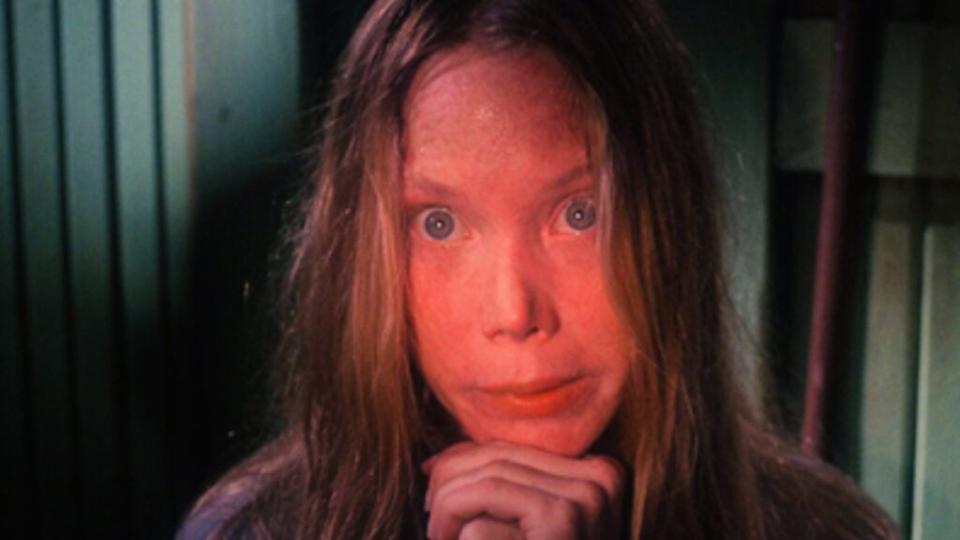
Brian De Palma’s Stephen King adaptation “Carrie” is iconic for its blood-soaked prom scene, but the film itself is also a powerhouse performance vehicle for young Sissy Spacek and Piper Laurie as her overbearing mother (both of whom received Oscar nominations for their work). This is the story of a young outcast who suffers constant bullying both in school and at home, and then discovers she has telekinetic powers. De Palma’s filmmaking here brings Carrie’s powers to life in a visceral manner decades before CGI was a thing. This is a quintessential “teen horror” film. – Adam Chitwood
“Halloween” (1978)
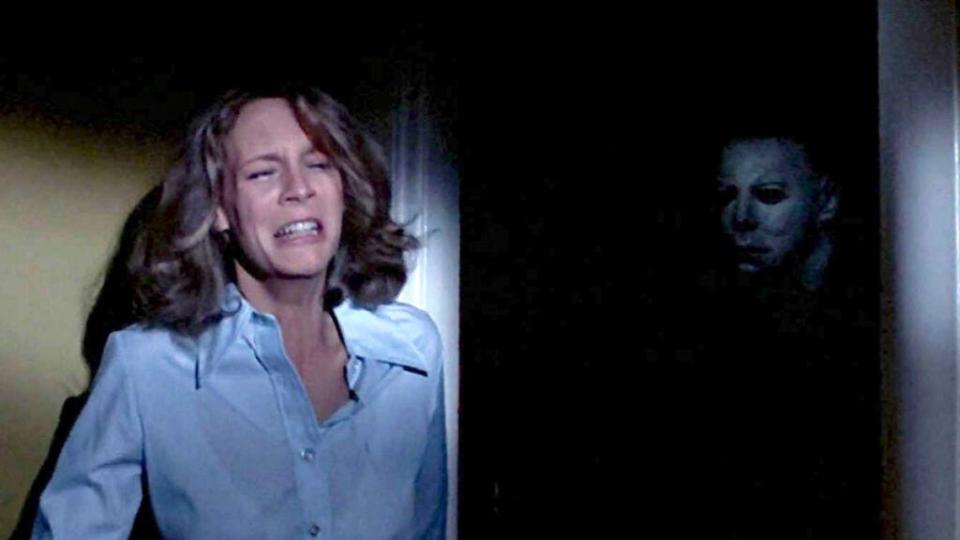
It’s all the more impressive that the “Halloween” franchise has endured so long given that the first film was a bona fide indie, made on a shoestring budget by a bunch of young filmmakers. And yet, John Carpenter’s original remains unmatched in both quality and spookiness. It’s still the scariest of the bunch, as Carpenter’s chronicle of a masked man going on a killing spree on Halloween night brilliantly uses the towering figure of The Shape to impose an unsettling quality throughout the film. But the movie’s secret weapon is Jamie Lee Curtis as one of the OG final girls. – Adam Chitwood
“Alien” (1979)
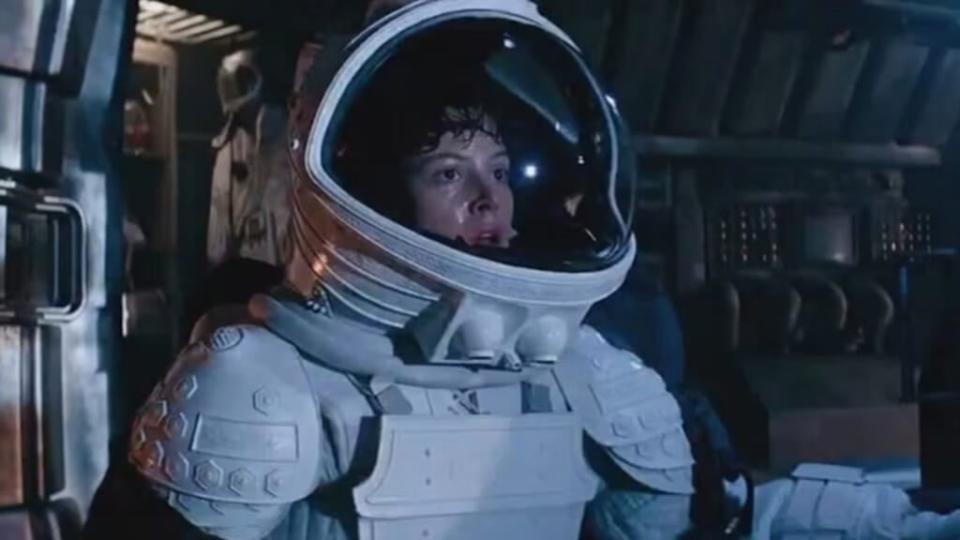
A shocking body horror, ground-breaking sci-fi, slow-burn “haunted house” movie, Freudian psychosexual nightmare, pioneering creature feature and grim satire of corporate greed, Ridley Scott’s “Alien” is a masterwork of embracing and exploring the far ranges of cinematic genre storytelling. Sigourney Weaver stars in the iconic role of Ellen Ripley, a blue-collar “space trucker” fighting for her life against the face-hugging, chest-bursting, acid blood-spewing life cycle of an unknown alien creature (since dubbed the Xenomorph). H.R. Giger’s inimitable creature design is one for the ages, and so is Scott’s seminal 1979 space horror film. – Haleigh Foutch
“The Shining” (1980)
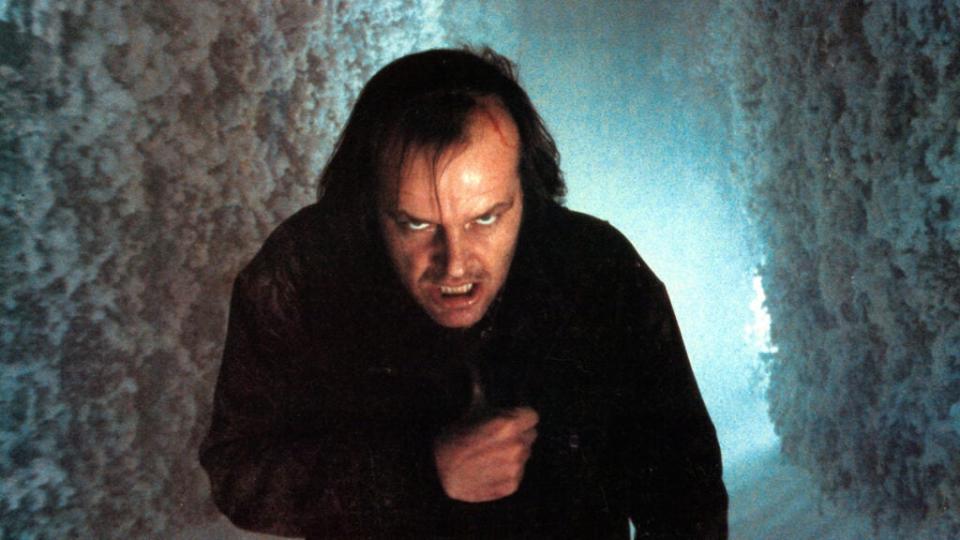
Stanley Kubrick’s beloved adaptation of Stephen King’s seminal novel is about the horrors of writer’s block, haunted hotels and being cooped up with your family, depending on how you look at it. A never-better Jack Nicholson and Shelley Duvall play couple Jack and Wendy, who become the winter caretakers of the remote Overlook Hotel. While their young son starts experiencing strange premonitions, Jack begins to lose his mind, leaving Wendy to defend them against his lust for murder. From “Here’s Johnny!” to the shot that made the Steadicam famous, there’s plenty to love about “The Shining” (even if King really hated it). – Harper Lambert
“Friday The 13th” (1980)
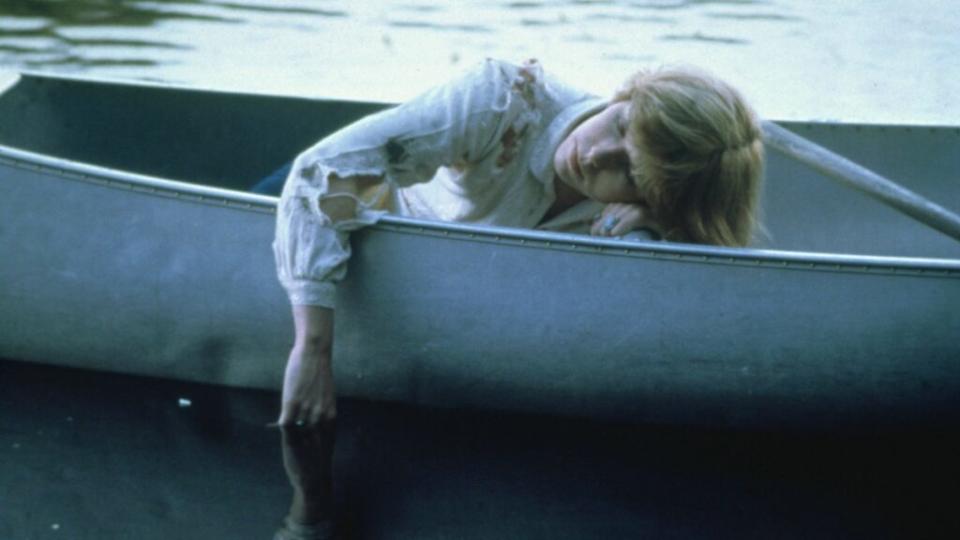
A bunch of teens get together, have sex, and start getting killed off one-by-one. It’s a trope now, but with 1980’s “Friday the 13th,” it was a twist on the slasher genre that kicked off an entire franchise. Spoiler alert, but Jason Voorhees is not the killer in this first “Friday the 13th” film (he doesn’t arrive until the sequel), and yet the film is spooky and campy in the best way. – Adam Chitwood
“An American Werewolf in London” (1981)
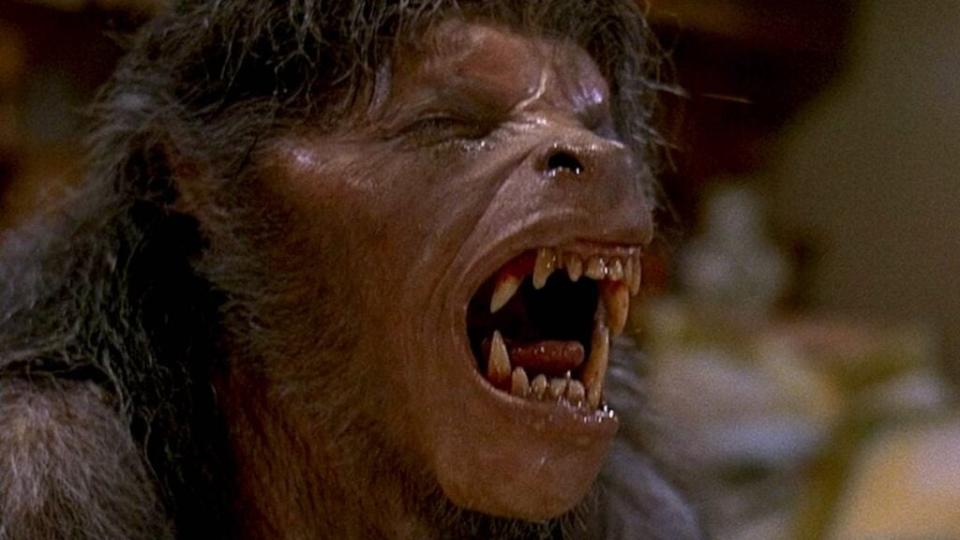
We could just as easily have filled the “horror comedy” slot with an “Evil Dead” movie, but “An American Werewolf in London” gets bonus points for also being an incredible (and incredibly influential) werewolf film. Filmmaker John Landis’ 1981 film toes the line between horror and comedy perfectly as it follows two American backpackers who are attacked by a werewolf while traveling in England. One dies, and the other is left to question whether he’ll soon turn into a werewolf all while being haunted by the rotting corpse of his best friend. This one has groundbreaking makeup effects by Rick Baker that set the gold standard for werewolf transformations going forward. – Adam Chitwood
“Poltergeist” (1982)
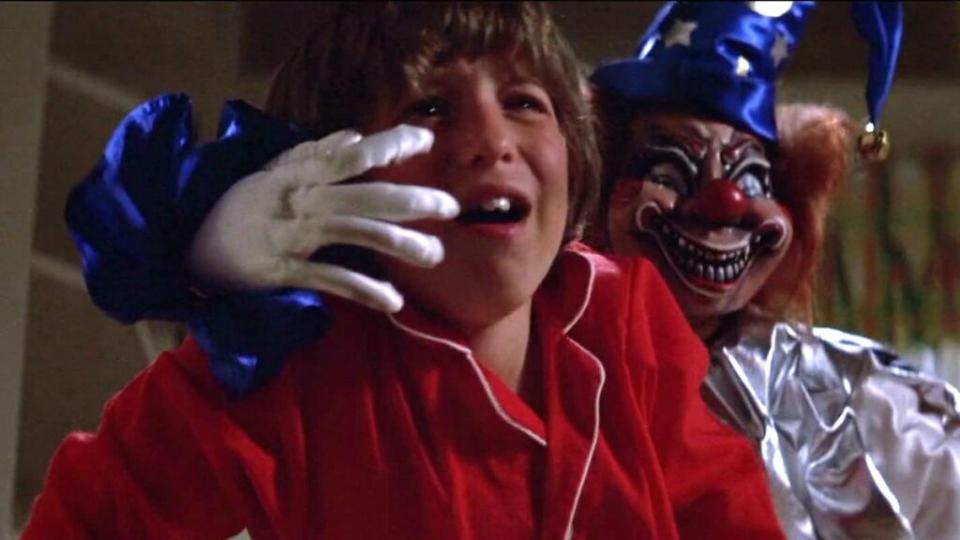
Steven Spielberg brought his sci-fi and horror-loving tendencies together with 1982’s “Poltergeist,” which was co-written and produced by Spielberg while “Texas Chainsaw Massacre” director Tobe Hooper took the reins as director. This is a supernatural horror classic mixed with a haunted house film, as a family living in the suburbs finds themselves terrorized by a supernatural presence. While debates persist as to how heavy Spielberg’s hand was in the direction of the film, it’s filled with unmistakable flourishes from Hooper that up the ante of the horror here. – Adam Chitwood
“The Thing” (1982)
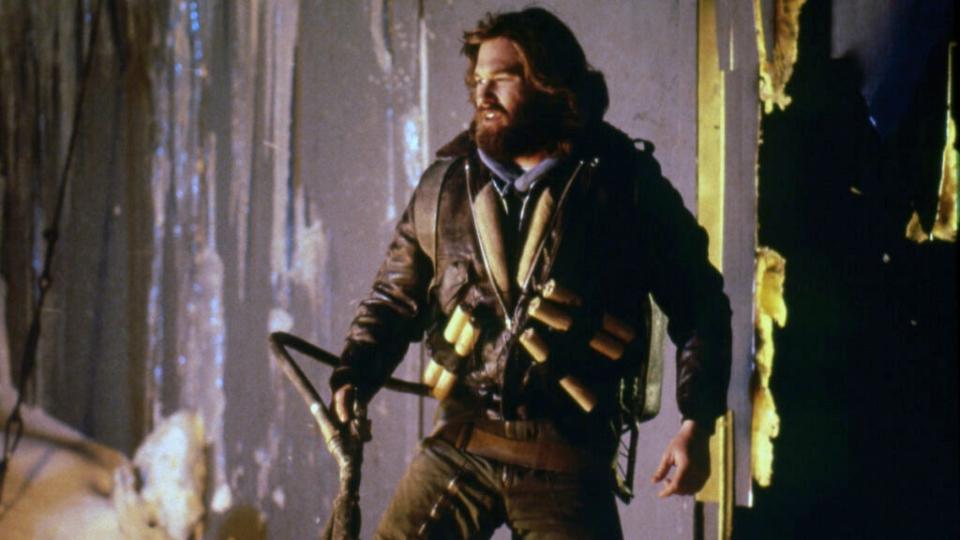
Take a batch of hardened and isolated men, drop them in the arctic with a shape-shifting alien, throw in some of the best practical effects work in film history — directed by horror GOAT John Carpenter, no less — and what do you get? A relentless, stone-cold classic, that’s what. And a technical filmmaking marvel, to boot. Starring Kurt Russell and an ace ensemble of character actors including Keith David and Wilford Brimley, “The Thing” follows a team of research scientists thrust into terror and all-consuming paranoid dread when their research site becomes host to an otherworldly menace that can take — and grotesquely reshape — the form of living creatures. Could be you, could be me, could be the dog, but “The Thing” is ever waiting to consume and contort its next victim. – Haleigh Foutch
“A Nightmare on Elm Street” (1984)
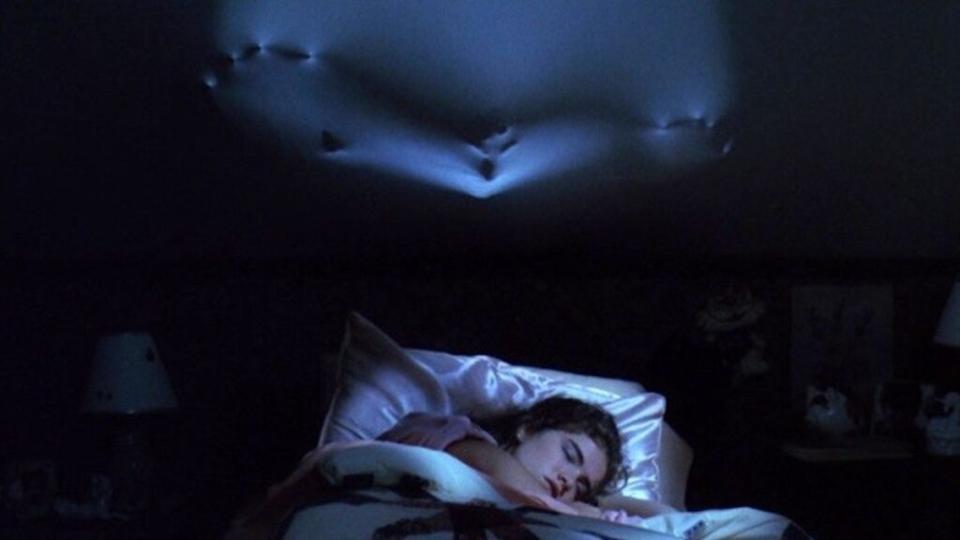
Wes Craven would go on to make even more new horror classics (notably “Scream”), but he created one of the most iconic slasher villains in “A Nightmare on Elm Street.” The conceit of this one is brilliant: what if a dead serial killer could terrorize you in your dreams? Much more visually interesting than many other slashers of the 80s, Craven plays with dream logic while conjuring unforgettable images like a young Johnny Depp being sucked into his bed, which then spits out an exorbitant amount of blood. And Freddy Kruger became, of course, a horror villain for the ages. – Adam Chitwood
“The Blair Witch Project” (1999)
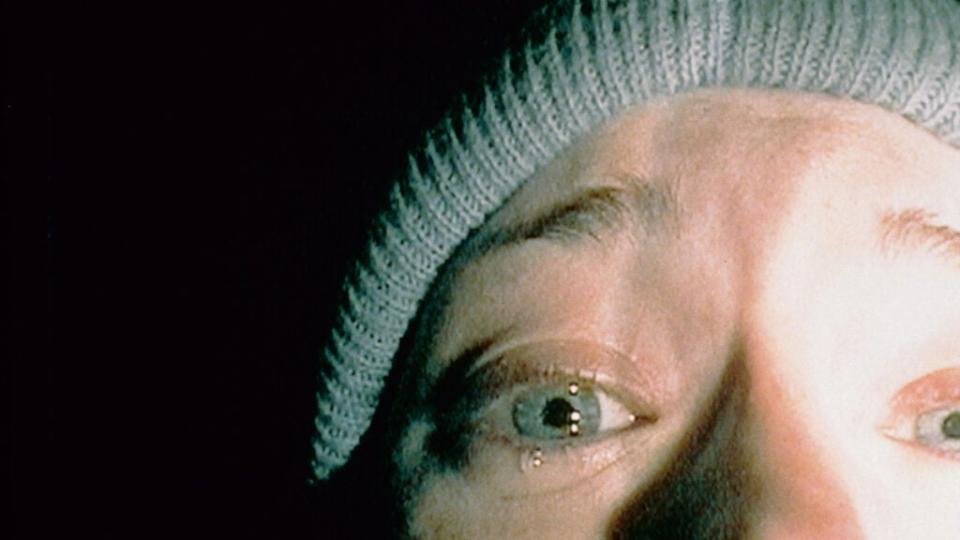
Many a great horror movie has been made on an ultra-low budget. “The Blair Witch Project” raised the bar by purposefully reproducing the look and feel of a student film, to bone-chilling effects. The film begins with the information that everything you’re about to see was retrieved from a video camera left behind in the woods. Through grainy, handheld footage, “Blair Witch” tells the story of three students whose quest to make a documentary about the Blair Witch goes horribly wrong. The movie is a testament to the power of a simple premise and the suspense that can be generated from showing only enough to send the audience’s imagination into overdrive. It’s also credited for the resurgence of the found-footage technique, as seen in later films like “Paranormal Activity” and “Cloverfield.” – Harper Lambert
“Silence of the Lambs” (1991)
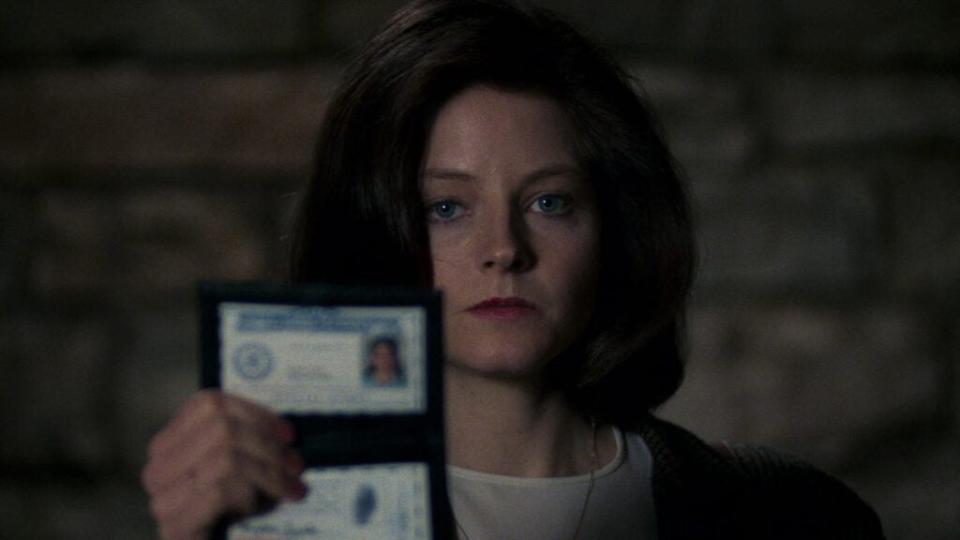
There are few images more iconic to the genre than Dr. Hannibal Lecter restrained by a face mask and a straitjacket. In the film that won them both Oscars, Jodie Foster stars as the tough-as-nails FBI agent Clarice Starling, with Anthony Hopkins as the serial killer and cannibal she enlists to help catch another serial killer, Buffalo Bill (Ted Levine). Jonathan Demme’s groundbreaking psychological horror relegitimized horror as a genre deserving of awards attention (it also won Best Picture, Director and Adapted Screenplay). More importantly, it’s an unflinchingly dark study of human nature that is as entertaining (and quotable) as it is terrifying. Eat your popcorn at the beginning, because you may lose your appetite by the end. – Harper Lambert
“Candyman” (1992)
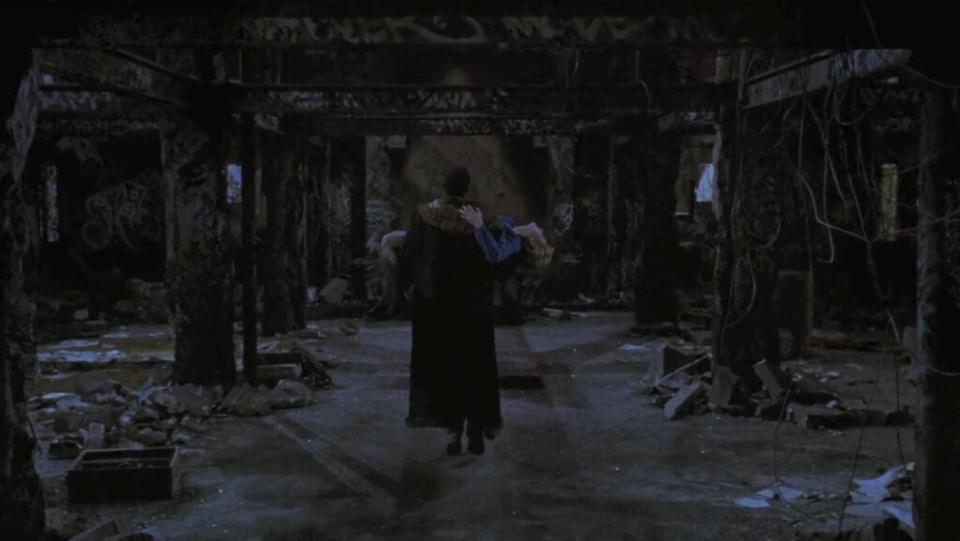
Often considered a slasher movie despite very little on-screen bloodshed, the original “Candyman” is, at its haunted heart, much more of a gothic romance in its tale of corruption, decay and poorly buried evils from the past. Tony Todd stars as the iconic hook-handed title character alongside Virginia Madsen as Helen, a student whose research into urban legends leads her right to the deadly embrace of the Candyman – the vengeful spirit of the son of a slave who was tortured and murdered for loving a white woman. Inspired by Clive Barker’s short story “The Forbidden” and directed by Bernard Rose, the 1992 film has understandably earned a complicated legacy surrounding its discussion of race in America, but the film inherently invites and engages with complex conversation, and grounded by the commanding, regal performance by Todd, “Candyman” is about as classy and unapologetically mature as horror movies get. – Haleigh Foutch
“Scream” (1996)
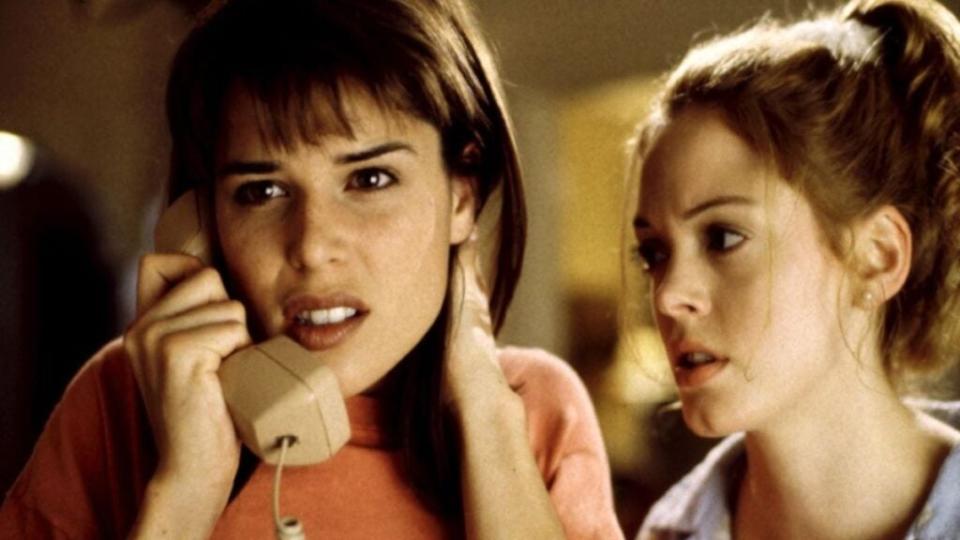
Part parody, part genuine horror, “Scream” pays homage to the teen slashers of the two decades preceding it – including those by its director, genre maestro Wes Craven. The ‘90s hit reinvented the wheel with its brash self-awareness of genre tropes, fulfilling some while subverting others (e.g. killing off its biggest star in the opening scene). Yet “Scream” delivers on its title by committing to the bit with a terrific cast of characters, led by the kick-ass Sidney Prescott (Neve Campbell). When a mysterious killer named Ghostface starts picking off her horror-obsessed classmates one by one, Sidney may be the only one equipped to stop him – if she really has what it takes to be a Final Girl. Don’t be surprised if you end up covering your eyes even as you’re laughing. And if “Scream” is your speed, it’s worth checking out the sequel. – Harper Lambert
“Saw” (2004)
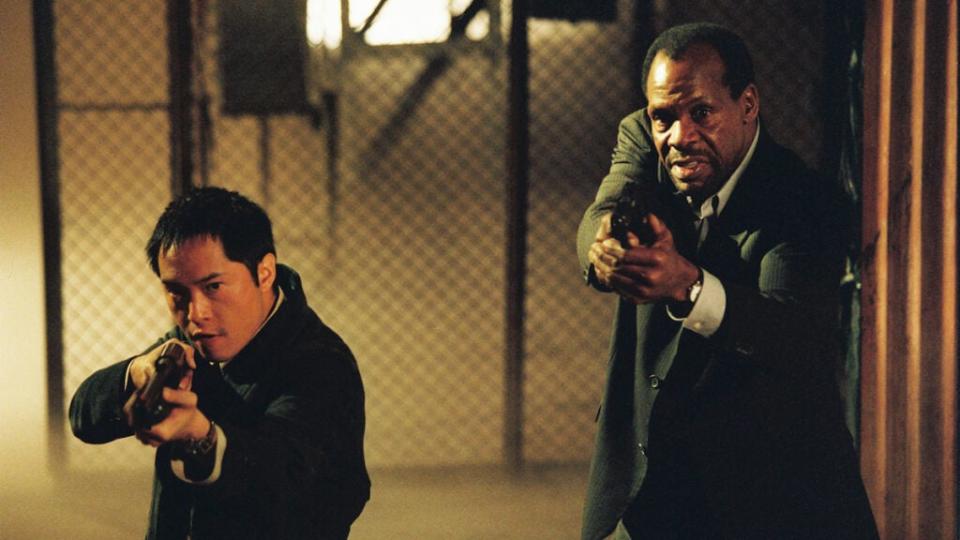
No matter how you feel about the “Saw” franchise and the torture horror trend it inspired, there’s no denying this is one of the most influential horror movies of all time – and it’s not nearly as blatantly grotesque as the films that followed in its wake. In fact, one of “Saw’s” most effective is how much it leaves to the imagination (a striking contrast to the flesh-mangling follow-up films), “Saw” is a dark, effed-up noir thriller fueled by the horrific traps the detectives investigate. It’s an essential for how it inspired the next decade of horror (to put a point on it, largely sloppy, fleshy movies all about the torture rather than the mystery or the message), but it also introduced James Wan (and writer Leigh Whannell), who has become arguably the most influential modern voice in horror. From “Saw” to “Insidious” to the “Conjuring” franchise, Wan has consistently delivered several of the most successful horror films and franchises of our era, and it all began with “Saw.” – Haleigh Foutch
“Get Out” (2017)
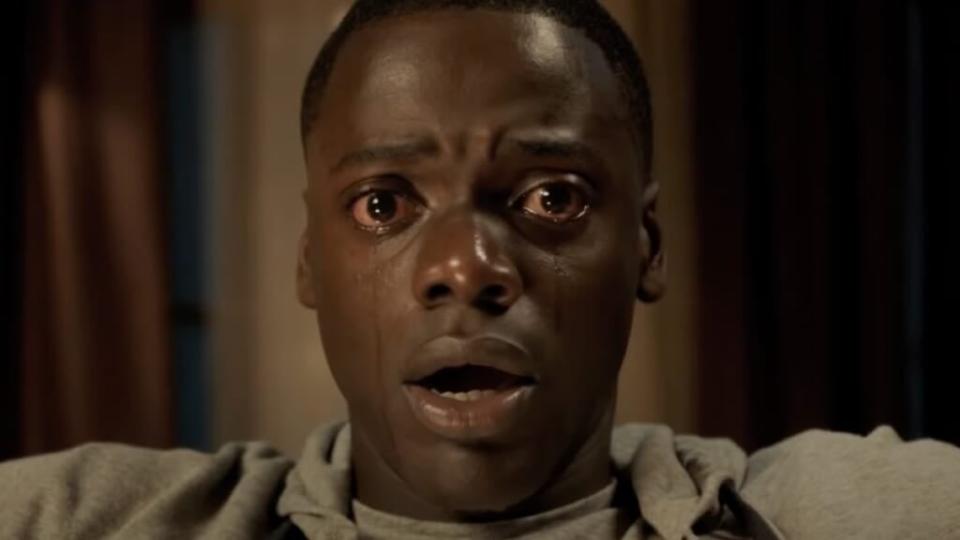
Jordan Peele’s “Get Out” stunned horror fans and filmmakers alike as his directorial debut provided a ripe social commentary with a killer edge. The film follows a Black man named Chris, played by Daniel Kaluuya, who travels to Upstate New York to visit his white girlfriend’s family for a weekend. While the family assures Chris they voted for Obama, Chris begins to get the feeling that all is not well as Black people in the community act strangely, and he begins to suspect his girlfriend is lying to him. Recognized by the American Film Institute and the Oscars for Best Original Screenplay, its commercial success and lasting cultural impact remains relevant today. – Loree Seitz

